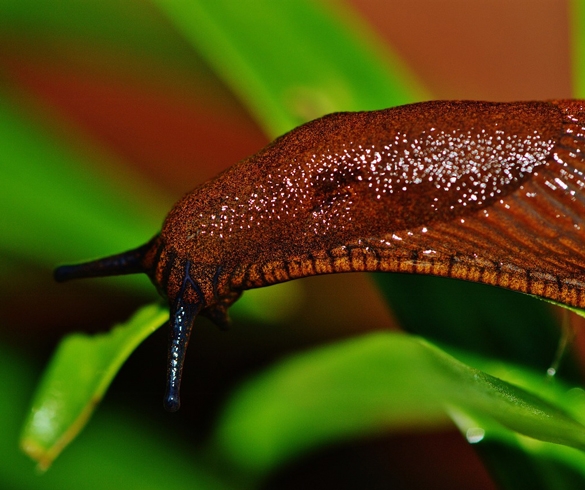
Controlling Slugs
– If there\’s one garden pest that\’s universally despised, it\’s slugs. Not only do they eat prized vegetables, herbs, and flowers at night while you sleep, but when you do catch them, they\’re so slimy and squishy that many gardeners won\’t even touch them, let alone kill them. However, slugs can be outwitted.
Prevention. Slugs like a dark, damp environment, so anything you can do to create a light, dry environment will discourage them from hanging around. If you have slug problems, forgo mulch, space plants farther apart, and cultivate the soil frequently to keep it dry on the surface.
Barriers. Being soft-bodied creatures, slugs don\’t like anything sharp. If cut, they often dry up and die. Sprinkle sharp sand; diatomaceous earth; or dried, crushed egg- or oyster shells around favorite plants. Refresh the materials after heavy rains. If you have a raised bed, permanent border, or container, fasten strips of copper flashing around the bed. When slugs come in contact with the copper, they get an electric shock. (Think of it as an electric fence for slugs.)
There\’s evidence that caffeinated coffee is repellent to slugs and snails. Encircle individual plants with a ring of coffee grounds or liquid coffee. The grounds also provide some nutrients for plants.
Traps. Using slugs\’ propensity for hiding in the dark, place boards on garden pathways. Early in the morning, turn over the boards and knock the slugs into a bucket of soapy water. Slugs also like beer (actually, the yeast in beer). Create a slug trap by sinking an empty soup can or tuna container into the soil to the soil line and filling it with beer. At night the slugs will dive in to feast and eventually drown. Clean out the trap in the morning.
Baits. Although the most common slug control baits contain the slightly toxic chemical metaldehyde, some new baits, such as iron phosphate, are less toxic to animals and humans. Any bait will have to be reapplied after a rain, and you should be careful not to sprinkle baits where pets and young children can find them.
A former floral designer and interior plantscaper, Kathie Bond-Borie has spent 20 years as a garden writer/editor, including her current role as Horticultural Editor for the National Gardening Association. She loves designing with plants, and spends more time playing in the garden – planting and trying new combinations – than sitting and appreciating it.
Source
National Gardening Association






















